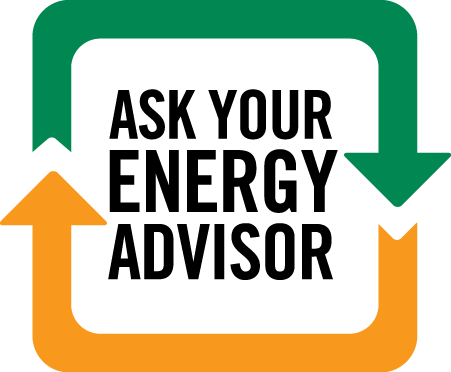Plan before you plant.
When it comes to planting, location is everything. Trees and shrubs that are planted properly can provide beauty and shade to your landscape, or serve as a wind-block during winter. However, planting near overhead or underground power lines could endanger your home and hurt our ability to provide you with safe, reliable service in the future.
If you are planning to plant trees or shrubs in your yard, please review the following information carefully.
Underground Utilities – Call 811!
Planting too close to underground utilities can be very dangerous. Always call 811 before you dig to get the precise location of your underground utilities. If you dig without knowing where your underground utilities are located, you could sever a line, leading to service outages and serious hazards.
Expanding tree roots can lift or crush utility lines and cables, creating outages, costly repairs, and environmental hazards. Make sure to read the tag on any tree or shrub carefully before planting, and keep them a safe distance away from underground utilities.
Overhead Power Lines – Right Tree, Right Place
Plant the right tree in the right place! When selecting a tree or shrub, read the plant’s tag to find it’s “mature height” – or the size it will reach once it is fully grown.
Avoid hazardous conditions and costly service interruptions by planting tall-growing trees (mature height of 45 feet or higher) at least 50 feet away from power lines.
Trees that grow 40 feet tall or less can be planted 20 feet away from overhead lines. Small trees and shrubs that grow fewer than 20 feet tall may be planted near overhead lines.
See the diagram below for an example of proper planting around overhead power lines.

Access to Equipment
To help ensure reliable service, our crews must always have unobstructed access to our distribution equipment. Members are responsible for keeping areas around electric meters, transformers, and other electrical equipment free of any vegetation.
If you have a pad mounted (green box) transformer in your yard, make sure to allow 10 feet of clearance in front of transformer doors, and four feet of clearance around the sides and back. We inspect our transformers periodically, and it may occasionally be necessary for crews to remove vegetation to access the transformer.
Consolidated does not offer hazard removal for surface-mounted equipment; it is up to each member to hire a qualified contractor to complete any necessary work.
The below image shows an example of landscaping that is too close to a pad mounted transformer.








